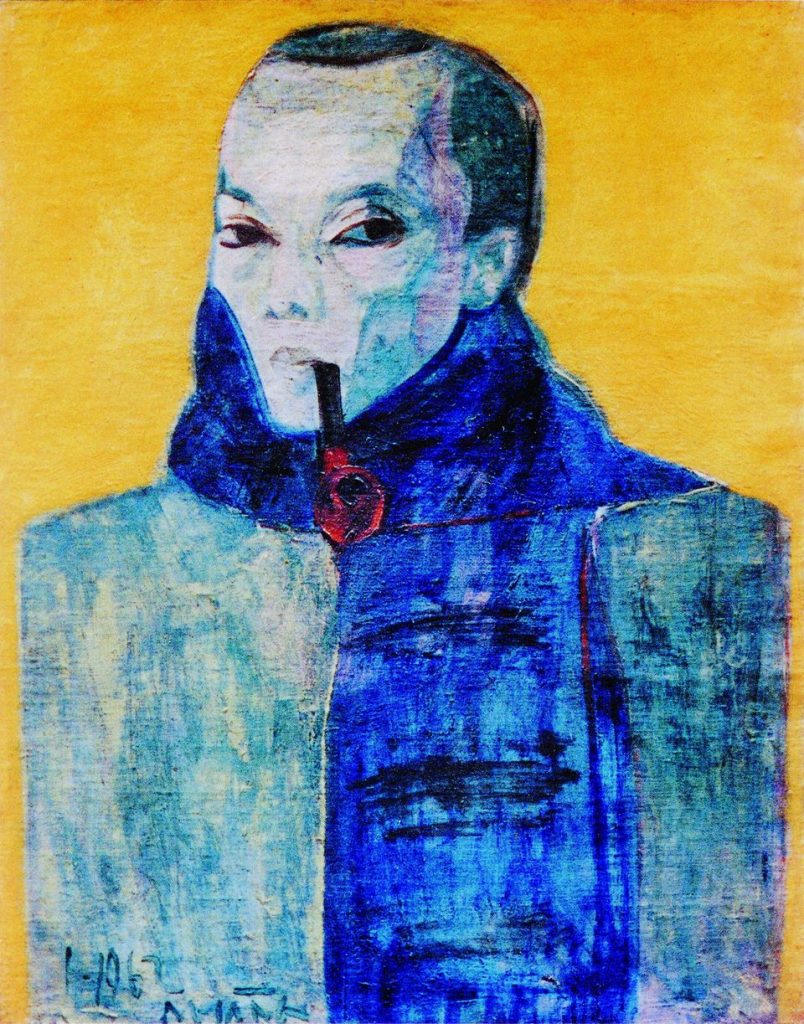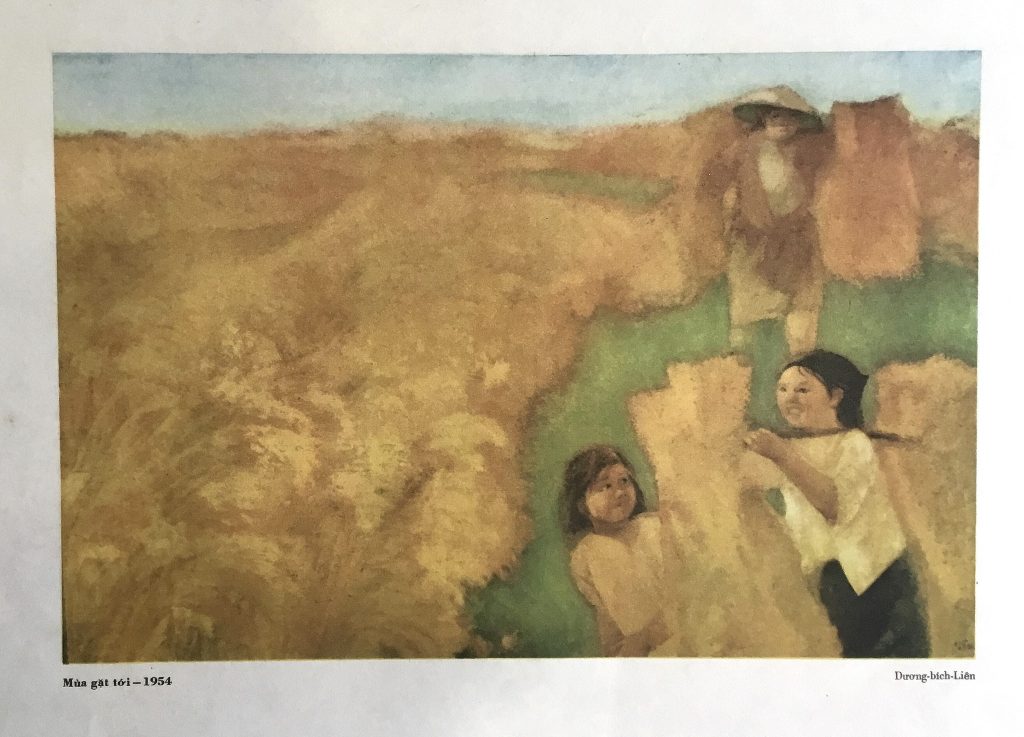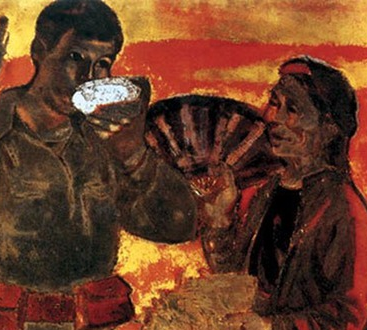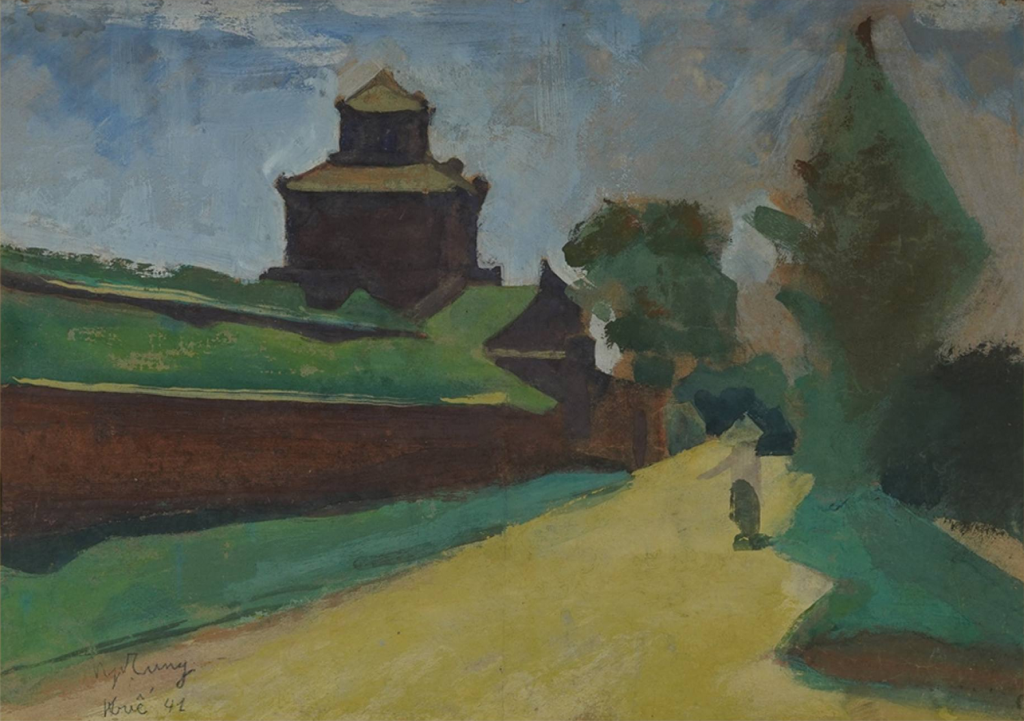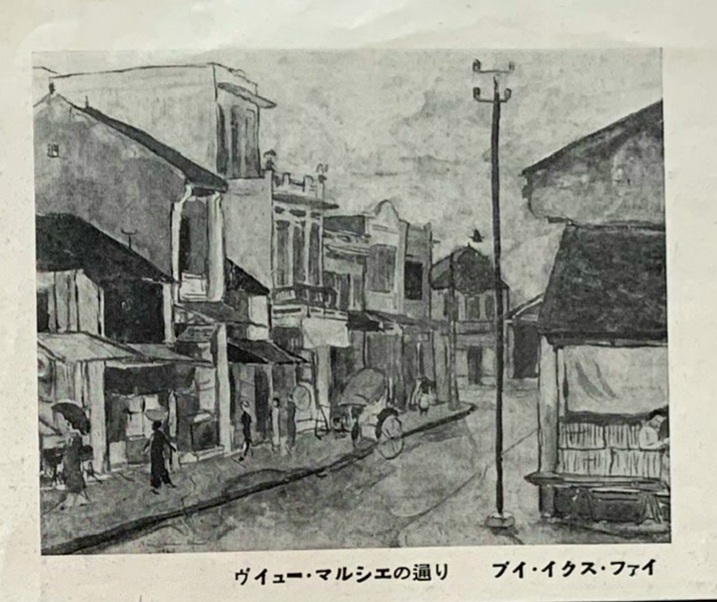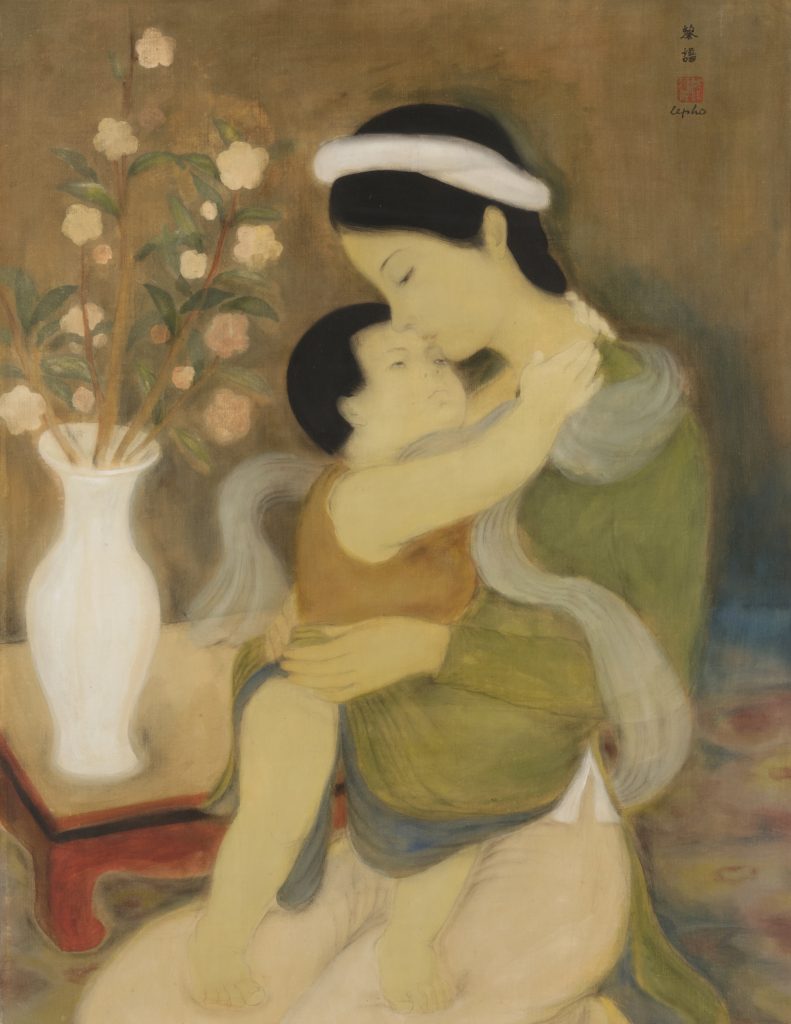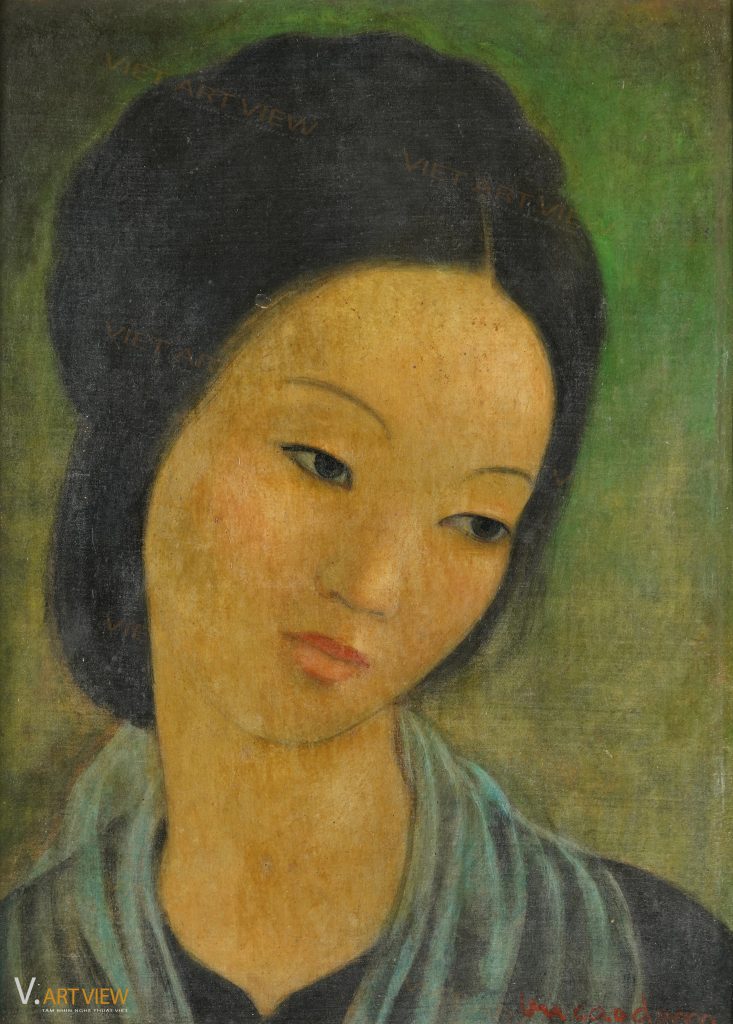
VŨ CAO ĐÀM (1908-2000). Portrait of young woman with a blue scarf. Around 1950s.
Mix media on silk mounted on wood. 33×24 cm
The great French writer Voltaire (1694-1778) once said: “Beauty pleases the eyes only, sweetness of disposition charms the soul.”
Art originates from emotions
There is a Vietnamese proverb saying that “the eye like a laksa leaf and the eyebrow like a willow leaf are worth hundreds of ‘quan’” which refers to the physical appearance of a girl whose destiny is rich and wealthy. “Eye like laksa leaf” with a large eyelid, a bit like phoenix’s eyes, bringing both a deep sadness and a bit of sharpness, making the opposite fall in love and want to discover the source of that charm.
Artists studying at the Indochina Fine Arts College loved this beauty, and it has even become a very popular visual style.
The work “Portrait of a young woman with a blue scarf”, made of silk, created in the early 1950s, is one of the most typical works of woman portrait painting by Vũ Cao Đàm.
With his profound artistic vision, the portrait of Vietnamese young woman is meticulously and delicately depicted, exuding dignity and elegance. From the thick black hair wrapped in a scarf to the high, wide, intelligent forehead. Most attractive are the long-tailed eyes with thin eyebrows; a delicately rounded chin to complete the features, fully converging the beauty of a young woman according to the standards of ancient Vietnamese folk physiognomy.
The blue scarf made of thin transparent chiffon material is quite popular in Vũ Cao Đàm’s silk works. It is like an “important interaction” that acts as the only transparent shape, covering solid shapes such as the body, face… with the intention of flattering the softness and gentleness – external and temperament – internal of the character.

The most special point that the artist focused on expressing is the conceptual part used to deeply describe the state of mind. It radiates from the features, covering the beautiful face with confidence and elegance; it is the pinnacle of “charisma” that a woman can reach, no matter what emotional state she is in.
So, who is that girl, where is she, what is her personality, why does she carry such a gentle, deep sadness that softens the hearts of all eyes facing her? The viewer does not know, the viewer wants to find out the mood of that young woman. Is that mood the artist’s own? Because when artists paint – they paint for the emotions in their hearts. These things originate from many reasons, perhaps from society, from family; or even bigger thoughts from the perspective and vision of the nation and the homeland.
Originating from beautiful memories
In 1931, after his beloved parents passed away, Vũ Cao Đàm went to Paris to study and chose France to settle. From that time until the end of his life, he never once had the opportunity to return to visit his homeland to satisfy his longing.
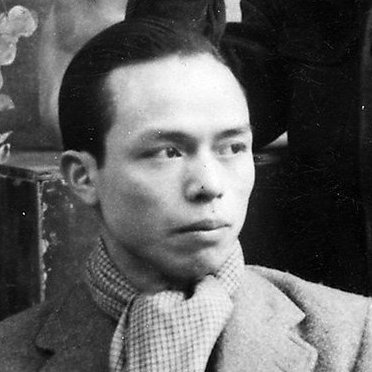
Portrait of artist Vũ Cao Đàm (1908-2000)
During his 23 years in Việt Nam, from childhood to adulthood, Vũ Cao Đàm’s mind was filled with beautiful images with his family and friends. Those wonderful, beautiful memories were always present in his heart. When settling in a far away country, deep in his heart, the homeland, Việt Nam with its culture, scenery, people, especially the image of his mother and father was always filled with nostalgia in his mind.
Those feelings were naturally transformed from his soul into his work. He depicted the beautiful memories of the past. At the same time, it is also the idea of a beautiful cultural tradition transformed into a typical woman character.
The value of emotions – The value of the work
There are several points of view on assessing the “value of a work of art”. A work of art needs to be deeply “understood” to become valuable. Or is it the diversity of each person’s perception that creates the value of art?
When looking at “The young woman and a blue scarf”, viewers put their emotions into the artist’s emotions and will see that “his intention is much deeper than depicting a portrait.”
Just an image of a beautiful young woman with gentle sadness, hidden elegance and determination, Vũ Cao Đàm painted his own mood and painted the mood of people living far away from their country, day and night longing for their motherland.
Written by Viet Art View
Copyrights belong to Viet Art View


